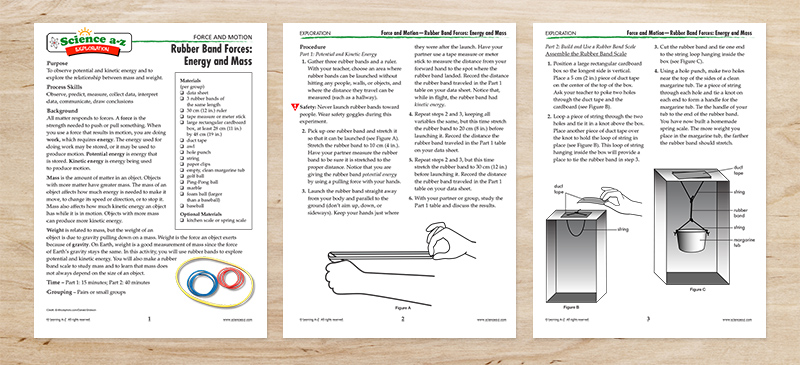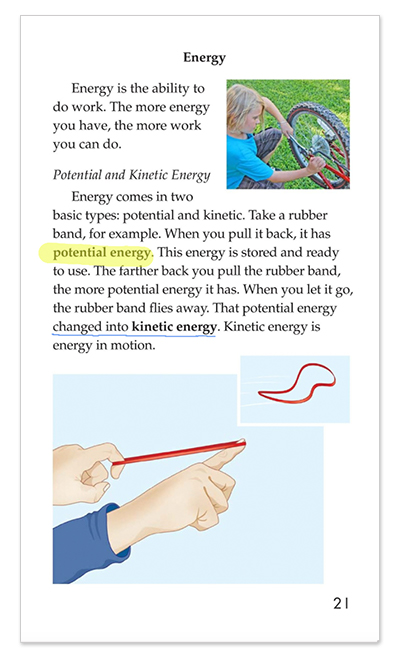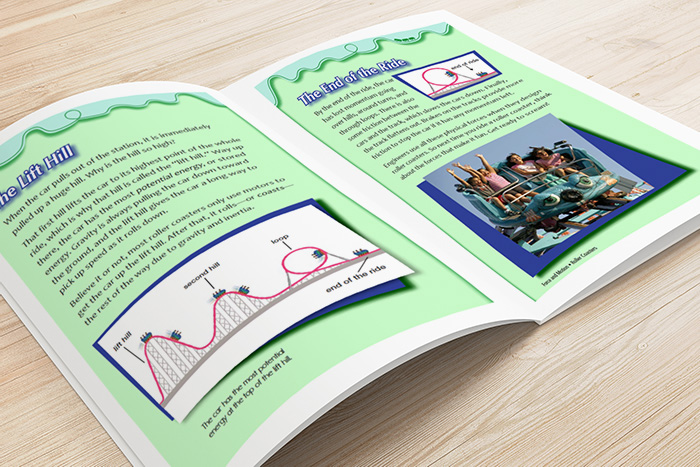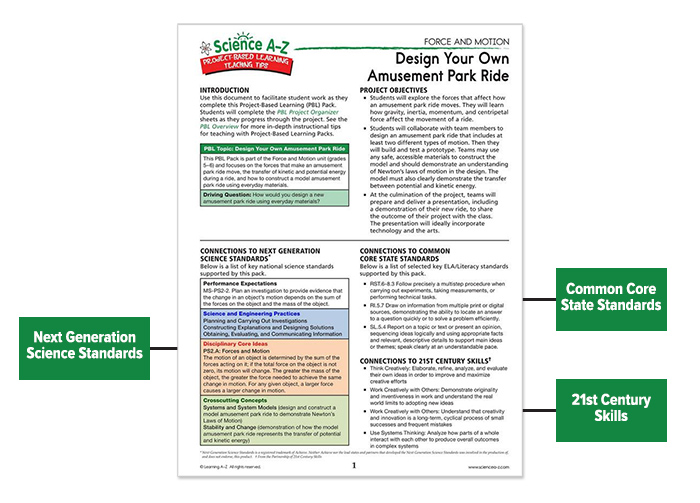Teachers in intermediate grades often face the challenging task of balancing instructional time across multiple content areas while meeting higher expectations with increased rigor. One way to accomplish this heroic task is to utilize resources that work to simultaneously instruct content, address 21st century skills, and reinforce core learning goals. Science A-Z provides these effective timesaving resources, which teachers can use in the classroom to create lesson plans that spark students’ inquisitive minds while developing critical thinking and collaboration skills.
Where to Begin
Students engaged in scientific learning tend to benefit from an anchor experience. For example, it is easier to understand the concept of erosion after actually seeing a trench in the soil and the murky running water that erosion creates.
Anchoring a science unit with an initial hands-on experience is a great way to engage students while providing the context necessary for understanding new ideas and vocabulary. Science A-Z Process Activities effectively fuel students’ curiosity and inspire future learning.

The Force and Motion Process Activity shown above (Rubber Band Forces: Energy and Mass) is an excellent example of an anchor experience. The activity starts by launching rubber bands to evaluate their potential energy. Then students predict the relative weight of various objects, and measure that relative weight with a self-created rubber band scale.
The activity requires students to use critical thinking skills as they collaborate with team members. Additionally, it reinforces important core skills like close reading, as students must study directions and supporting documents in order to successfully complete the task.
Next Steps
Now that students have a reference experience, they can read the corresponding non-fiction book to learn more about the content and work on answering questions that may have surfaced during the anchoring activity. For example: how did potential energy transfer to kinetic energy when they shot the rubber band down the hall? Why did the golf ball appear heavier (or lighter) than the baseball?
This stage offers teachers a unique opportunity to scaffold in additional reading comprehension exercises to fully support core skills. Teachers can reinforce core concepts and draw connections between cause and effect in the literary world and cause and effect in the physical world.

Teachers can identify specific FOCUS Books to use as a bridge for extension activities. For this unit, the FOCUS Book Roller Coasters is a great option. This book discusses the dynamics of potential and kinetic energy, and explains the considerations engineers must address when they design new roller coasters. This information serves as a solid basis for the rigorous culminating activity: a Project-Based Learning (PBL) Pack that requires students to design their own roller coaster.

Bringing it Together
Science A-Z Project-Based Learning Packs require students to collaborate using creative problem solving skills. The PBL Teaching Tips resource provides a breakdown of the NGSS*, Common Core Standards, and 21st century skills that are addressed within the activity.

While helping teachers maximize instructional time, this fun exercise also encourages students to use all the information in the unit to create a model for a new, functional roller coaster.
Instructional time is a precious commodity in today’s intermediate classroom. Teachers need access to resources that can simultaneously address multiple standards and disciplines.
Science A-Z resources successfully address core learning skills like inferencing, drawing conclusions from multiple sources, and cause and effect, while supporting the imperative content standards necessary for contemporary science instruction.
* Next Generation Science Standards is a registered trademark of Achieve. Neither Achieve nor the lead states and partners that developed the Next Generation Science Standards was involved in the production of, and does not endorse, this product.


